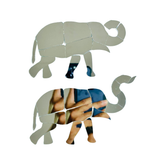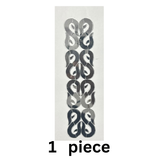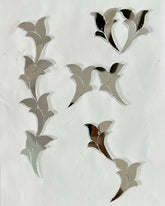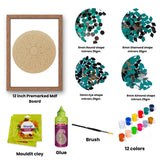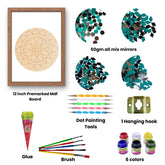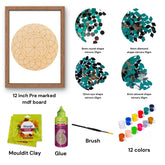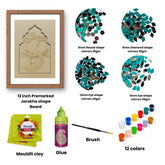How to Start a DIY Project: A Beginner's Guide
Starting a DIY project can be both exciting and overwhelming, especially if you're new to the world of crafting and home improvement. Whether you're looking to personalize your home decor, create handmade gifts, or tackle a renovation, knowing where to begin is key to ensuring a successful outcome.
Why Start a DIY Project?
Cost Savings:
One of the biggest advantages of DIY projects is the potential to save money. By doing the work yourself, you can avoid the high costs associated with hiring professionals.
Personalization:
DIY projects allow you to customize and personalize your space or items to reflect your unique style and preferences.
Skill Development:
Every DIY project is an opportunity to learn new skills and improve existing ones, whether it’s woodworking, painting, or crafting.
Creative Expression:
DIY projects provide a creative outlet, giving you the freedom to experiment with ideas and materials.
Sense of Accomplishment:
Completing a DIY project gives you a sense of pride and accomplishment, knowing you created something with your own hands.
Steps to Start a DIY Project:
Identify Your Project:
The first step is to decide what you want to create. Consider your interests, the time you have available, and your skill level.
Home Decor:
Create wall art, paint furniture, or make decorative items like vases or candles.
Handmade Gifts:
Craft personalized gifts for friends and family, such as photo frames, jewelry, or customized mugs.
Renovation:
Tackle small home improvement projects like painting a room, installing shelves, or updating fixtures.
Gather Inspiration and Research:
Once you’ve identified your project, gather inspiration from various sources such as Pinterest, Instagram, DIY blogs, and YouTube tutorials. Research different techniques, materials, and tools that you’ll need. Understanding the process and potential challenges ahead of time will help you feel more prepared and confident.
Plan Your Project:
Now that you have a plan, it’s time to gather all the materials and tools you’ll need. You can find supplies at your local hardware store, craft shop, or online. Make sure to double-check your list to ensure you have everything before you start.
Budget:
Determine how much you’re willing to spend on materials and tools.
Timeframe:
Set a realistic timeframe for completing the project, taking into account any drying or curing times if applicable.
3Skill Level:
Assess your skill level and identify any areas where you might need additional help or practice.
Gather Materials and Tools:
Now that you have a plan, it’s time to gather all the materials and tools you’ll need. You can find supplies at your local hardware store, craft shop, or online. Make sure to double-check your list to ensure you have everything before you start.
Set Up Your Workspace:
Having a clean, organized workspace is essential for a smooth DIY experience. Set up a dedicated area where you can work on your project without distractions. Ensure you have adequate lighting, ventilation, and enough space to move around comfortably.
Start with Simple Steps:
If you’re new to DIY, start with the simplest steps of your project. This will help you build confidence and momentum. Take your time, follow instructions carefully, and don’t rush the process. Remember, it’s okay to make mistakes—learning from them is part of the experience.
Stay Safe:
Safety should always be a priority when working on a DIY project. Wear protective gear such as gloves, goggles, and masks when necessary. Make sure you know how to properly use all tools and materials. If you’re unsure about a particular task, don’t hesitate to seek advice or help.
Finish and Enjoy Your Project:
Once you’ve completed all the steps, take a moment to admire your work. Add any finishing touches, such as paint, varnish, or decor, to give your project a polished look. Finally, find the perfect spot to showcase your creation or wrap it up as a thoughtful gift.
Conclusion:
Starting a DIY project is a rewarding experience that allows you to explore your creativity, develop new skills, and make something truly unique. By following these steps, you’ll be well on your way to completing your first project with confidence. So gather your materials, set up your workspace, and let your creativity flow. The world of DIY is full of endless possibilities, and the best time to start is now!





